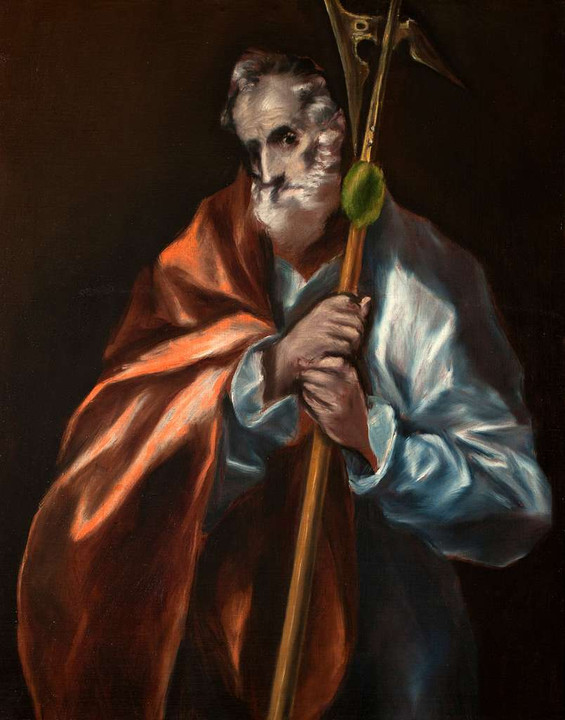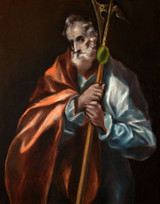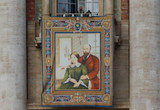Q&A with Fr Flader: Who was St Jude, the Apostle?
Originally Published by Catholicweekly.com
On 28 October each year, the church celebrates the feast of Sts Simon and Jude.
St Jude’s name is literally Judas, but to distinguish him from Judas Iscariot, who betrayed Jesus for 30 pieces of silver, his name in English is rendered Jude. It is occasionally written as St Jude Thaddeus, or simply Thaddeus (cf. Mt 10:3 and Mk 3:18).
The Gospel of John contains the only sentence St Jude uttered in the Scriptures, and John adds a clarifying note as he quotes him: “Judas (not Iscariot) said to him, ‘Lord, how is it that you will manifest yourself to us, and not to the world?’” (Jn 14:22).
The New Testament calls Jude “the brother of Jesus” in two passages (Mt 13:55, Mk 6:3).
Naturally, this does not mean that Jude was the Lord’s blood brother. The Greek word for brother can also mean cousin, relative, or even simply acquaintance.
The early Church Father, Papias of Hierapolis (ca. 70–163 AD), tells us in his Exposition of the Sayings of the Lord, that Jude was the son of Mary of Cleophas, one of the women at the foot of the Cross during Our Lord’s crucifixion (cf. Jn 19:25).
In that passage, St John calls this woman Jesus’ “mother’s sister, Mary the wife of Clopas.”
Papias too says that Mary of Cleophas, or Clopas, was the sister of Mary, the mother of the Lord, so that St Jude would have been Jesus’ cousin.
St Jude is the author of the Letter of St Jude, one of the shortest books in the Bible. There he identifies himself as “the brother of James” (Jude 1).
His brother, St James the Less, also an apostle, was the first bishop of Jerusalem and was known by the whole Christian community. In identifying himself in this way, the lesser-known Jude makes his person and authority known to all.
St Jude was very active in his missionary work. Some records indicate that he preached the Gospel in Mesopotamia, which includes most of modern-day Iraq, plus parts of Syria, Turkey, and Iran.
Some Syriac texts state that the apostles Jude and Bartholomew were the first to bring Christianity to Armenia, and they are venerated as the patron saints of the Armenian Apostolic Church.
Linked to this tradition are the monastery of St Thaddeus in northern Iran and that of St Bartholomew in southeastern Turkey, both constructed in what was then Armenia.
Other sources say that St Jude also preached in Judea, Samaria, Idumaea, and Libya.
We know that St Jude returned to Jerusalem in approximately 50 AD for the Council of Jerusalem, which resolved the question of what to demand of Gentile converts to the faith (cf. Acts 15:6-29). According to the fourth-century Christian historian Eusebius of Caesarea, Jude again returned to Jerusalem in the year 62 and took part in the election of his brother, St Simon, as the second Bishop of Jerusalem, following the martyrdom of his other brother, James the Less.
St Jude is regarded as the patron saint of hopeless causes for a good reason.
According to the historian Eusebius, while Jesus was still alive the ruler Abgar V of Edessa was afflicted with an incurable and painful disease. He had heard of the miracles worked by Jesus and wrote him a letter requesting a visit. Jesus responded that he would send one of his disciples.
After Jesus’ ascension into heaven, St Jude went to evangelise near the city of Edessa and he visited Abgar. He laid his hands on the sick ruler, who was reportedly healed instantly.
St Jude’s feast is shared with St Simon, his brother. Together with their other brother St James the Less, they would all have been sons of Mary of Cleophas, and cousins of Jesus.
The tradition of the Armenian Apostolic Church holds that St Jude suffered martyrdom in Armenia in 66AD, while a different tradition says that he was martyred about 65AD in Beirut together with his brother, the apostle St Simon, known as the Zealot.
The axe that he is often shown holding symbolises the way in which he was killed.
Narrow Gate Blog
Q&A with Fr Flader: Who was St Jude, the Apostle?
Originally Published by Catholicweekly.com On 28 October each year, the church celebrates the feast...
SmartLoving: Martyrs for marriage through the ages
Originally Published by www.catholicweekly.com.au By Francine and Byron Pirola While couple saints...
The hidden side of St Peter To Rot
By Michael Cook Originally Published by www.catholicweekly.com.au Papua New Guinea’s first saint, P...
Q&A with Fr Flader: Who is St Ava?
Originally Published by www.catholicweekly.com.au QUESTION: My daughter Ava asked me the other day w...
A martyr for marriage: the heroic Peter To Rot, PNG’s first saint
By Michael Cook Originally published by catholicweekly.com.au It’s not the eyes that draw you...
Q&A with Fr Flader: Divorce and children
By Fr John Flader | Originally Published by www.catholicweekly.com.au A couple sitting through ther...







